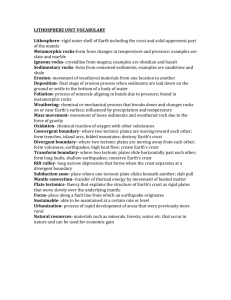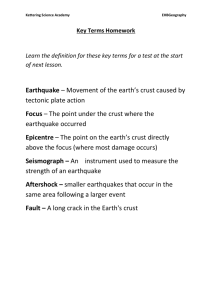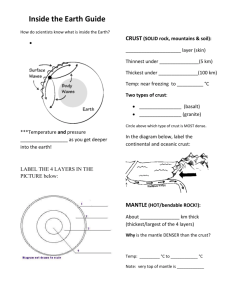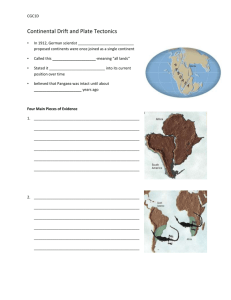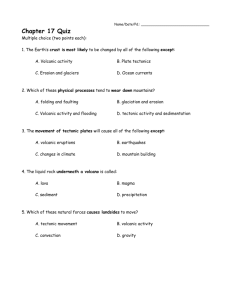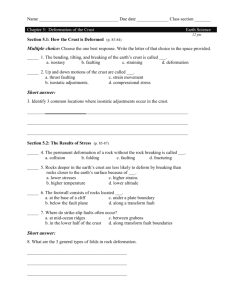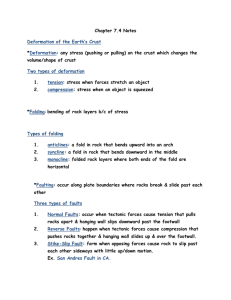2013 GSA Annual Meeting in Denver: 125th Anniversary of GSA (27
advertisement
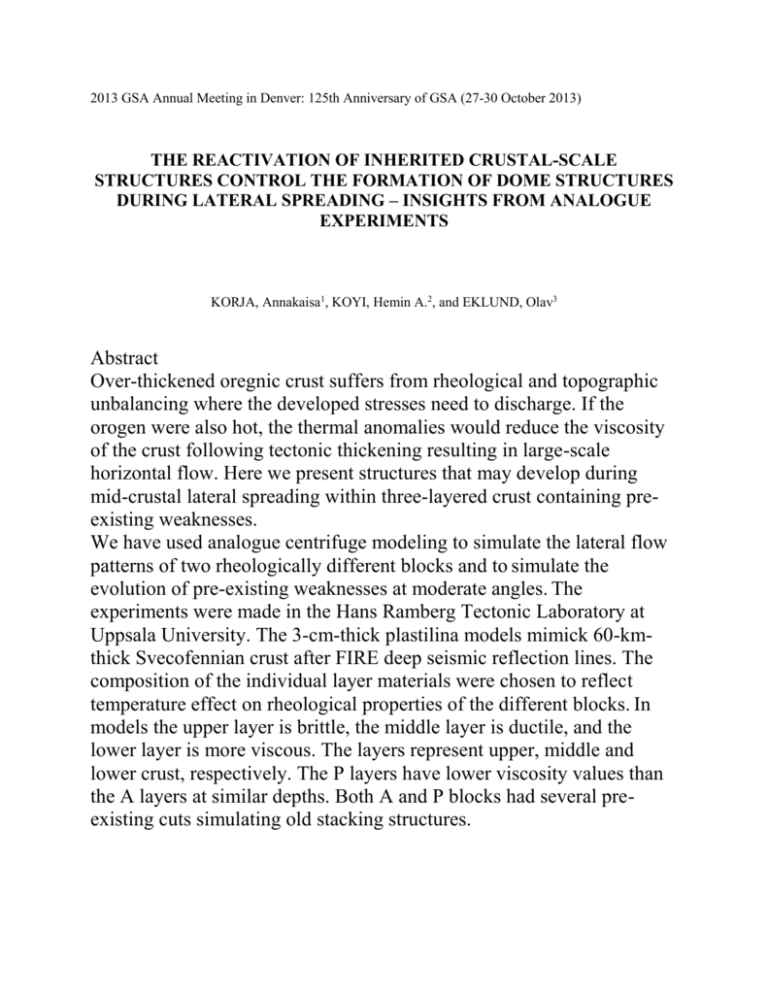
2013 GSA Annual Meeting in Denver: 125th Anniversary of GSA (27-30 October 2013) THE REACTIVATION OF INHERITED CRUSTAL-SCALE STRUCTURES CONTROL THE FORMATION OF DOME STRUCTURES DURING LATERAL SPREADING – INSIGHTS FROM ANALOGUE EXPERIMENTS KORJA, Annakaisa1, KOYI, Hemin A.2, and EKLUND, Olav3 Abstract Over-thickened oregnic crust suffers from rheological and topographic unbalancing where the developed stresses need to discharge. If the orogen were also hot, the thermal anomalies would reduce the viscosity of the crust following tectonic thickening resulting in large-scale horizontal flow. Here we present structures that may develop during mid-crustal lateral spreading within three-layered crust containing preexisting weaknesses. We have used analogue centrifuge modeling to simulate the lateral flow patterns of two rheologically different blocks and to simulate the evolution of pre-existing weaknesses at moderate angles. The experiments were made in the Hans Ramberg Tectonic Laboratory at Uppsala University. The 3-cm-thick plastilina models mimick 60-kmthick Svecofennian crust after FIRE deep seismic reflection lines. The composition of the individual layer materials were chosen to reflect temperature effect on rheological properties of the different blocks. In models the upper layer is brittle, the middle layer is ductile, and the lower layer is more viscous. The layers represent upper, middle and lower crust, respectively. The P layers have lower viscosity values than the A layers at similar depths. Both A and P blocks had several preexisting cuts simulating old stacking structures.


